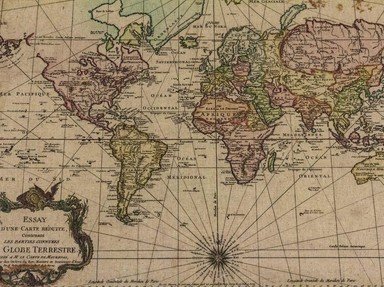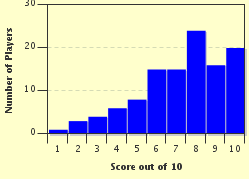Quiz Answer Key and Fun Facts
1. The book opens with Jason, Piper and Annabeth going to meet Penelope's suitors on Ithaca. When Greek hero Odysseus went missing on his journey home after the fall of Troy, Penelope was besieged by suitors seeking her hand in marriage. In which sea will you find the island of Ithaca?
2. Shadow jumping seems a bit unpredictable. After nearly ending up in Mount Vesuvius, Nico and his companions Reyna and Coach touched down at the House of the Faun in the ruins of Pompeii. What is the name of the nearby city?
3. After his encounter with her in 'The House of Hades', Leo has Calypso on his mind most of the time. Apart from helping his friends in the quest, his main problem is finding his way back to Ogygia. A Maltese tradition has it that Ogygia, her island prison, is in fact the second largest island in their archipelago. With its famous blue hole, what is the name of this island?
4. The Argo II was headed to Olympia on the Peloponnese peninsula to tangle with Nike, the goddess of victory, who was having split personality problems along with the rest of the Olympian gods. Which country were they heading to?
5. Meanwhile Nico and crew had landed in Évora with their cargo draped over the remains of a Roman temple in the historic centre of the city. Nico goes on to meet his father in the Chapel of the Bones. Their jumping off point for crossing the Atlantic, in which country was this Roman walled town?
6. Back to the Argo II which has by now reached the port of Pylos. Once known by the Italians as Navarino, it is on the western coast of Greece and provides access to the Ionian Sea. Piper and Frank's search eventually takes them to Nestor's Cave. They come away with some Pylosian mint. What is the name of the sea immediately to the north of the Ionian Sea?
7. Argos II then goes to Sparta for the next ingredient for the Physician's Cure. It falls to Annabeth and Piper to face the Temple of Fear in the ruins of Sparta. Giving rise to a word meaning 'using few words', in what region can you find Sparta?
8. The Argos II next stopped off for some gelato at the island of Mykonos in the Cyclades archipelago. Their destination for the final ingredient of the Physician's Cure is a short hop over to nearby island. In 430 BC the island's inhabitants consulted the oracle at Delphi about a plague in Athens. The oracle replied that it would end when the altar to Apollo was doubled in size. This was interpreted by Plato as a mathematical problem, which now bears the island's name. Paraphrased, the problem was: what is the length of the side of a cube having double the volume of a given cube. Your problem is to name the small island concerned.
9. The Argos II arrived by air over the temple complex at Epidaurus. Leo worked out how to gain access to the healing god in his underground chamber. This god gives his name to the Greek term for healing temples as well as to his staff, a rod entwined with a snake, which these days is often used by the medical fraternity as a symbol for their profession. What was the name given to such healing temples?
10. Final stop in the Mediterranean tour for the Argo II is Piraeus. At this port, Percy, Annabeth and Piper head underground to emerge in the ruins of the Acropolis. Which city does Piraeus serve?
Source: Author
suomy
This quiz was reviewed by FunTrivia editor
Tizzabelle before going online.
Any errors found in FunTrivia content are routinely corrected through our feedback system.

